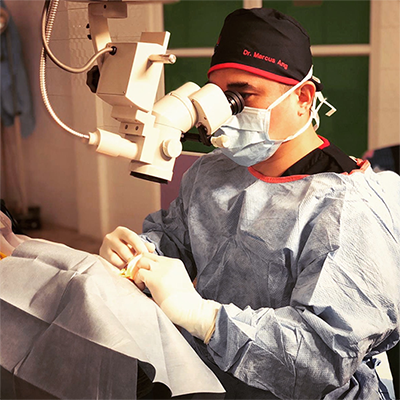Corneal blindness is the third leading cause of visual impairment worldwide, with more than 10 million people estimated to suffer from bilateral corneal blindness.
That may be why corneal transplantation is the most frequently performed solid organ transplant procedure in the world, and it remains the only method for restoring corneal clarity after end-stage corneal decompensation.
However, an estimated 1.4% of the global demand for corneal transplantation is being met.
South Asia and the Pacific account for one of the highest proportions of corneal blindness in the world but have one of the lowest rates of corneal transplantation. So it’s no surprise that the recent global pandemic caused by COVID-19 has led to a significant impact on corneal transplantation worldwide, especially in the Asia-Pacific region.
As the virus began breaking out in many countries in Asia, there was an immediate impact on corneal transplantation due to curtailing of elective procedures as resources were diverted to managing patients infected with COVID-19.
The potential for COVID-19 ocular involvement also has direct implications for corneal donation. The risk of transmitting the virus via corneal transplantation to recipients led to its suspension until adequate polymerase chain reaction (PCR) testing could be performed to exclude donor infection in some centers.
Furthermore, global travel restrictions have affected the corneal donor supply chain. This is especially significant in many parts of Asia, which rely heavily on imported donors to meet demands, since many locations lack local eye banks.
 |
|
Performing corneal transplantation in many parts of Asia, such as Myanmar, may become challenging post-COVID due to severe shortages in corneal donors and travel restrictions. Furthermore, patients are unable to travel for corneal surgeries or necessary follow-up visits.
|
As we grapple with recurrent waves of outbreaks in countries around the Asia-Pacific, the future of corneal transplantation remains under threat. Even as eye care services resume, recommended infection control measures to protect both health care workers and patients are not always available in developing countries around Asia.
Corneal transplantation services may face long waiting lists and increased costs with mandated testing and infection control measures. Travel restrictions have affected patients who travel abroad to better-resourced health care centers for treatment or follow-up care.
The impact of the COVID-19 pandemic on global travel restrictions and reduced corneal donation may lead to a long-lasting impact on corneal transplantation in the Asia-Pacific region. This could potentially drive innovation towards increasing donor utility through lamellar keratoplasty, development of artificial corneas or cell therapy. Evaluation of corneal diseases in the post-pandemic world may witness a paradigm shift towards telemedicine or artificial intelligence to meet these unmet needs around Asia.
 |
About the author: Marcus Ang, MBBS, is secretary of the APAO YO Committee, chair of the Singapore Society of Ophthalmology YO Chapter, an associate professor (DUKE-NUS), cornea and refractive surgeon at the Singapore National Eye Centre, member of the American Academy of Ophthalmology’s YO international subcommittee and graduate of the Academy’s Leadership Development Program XX, class of 2018. |